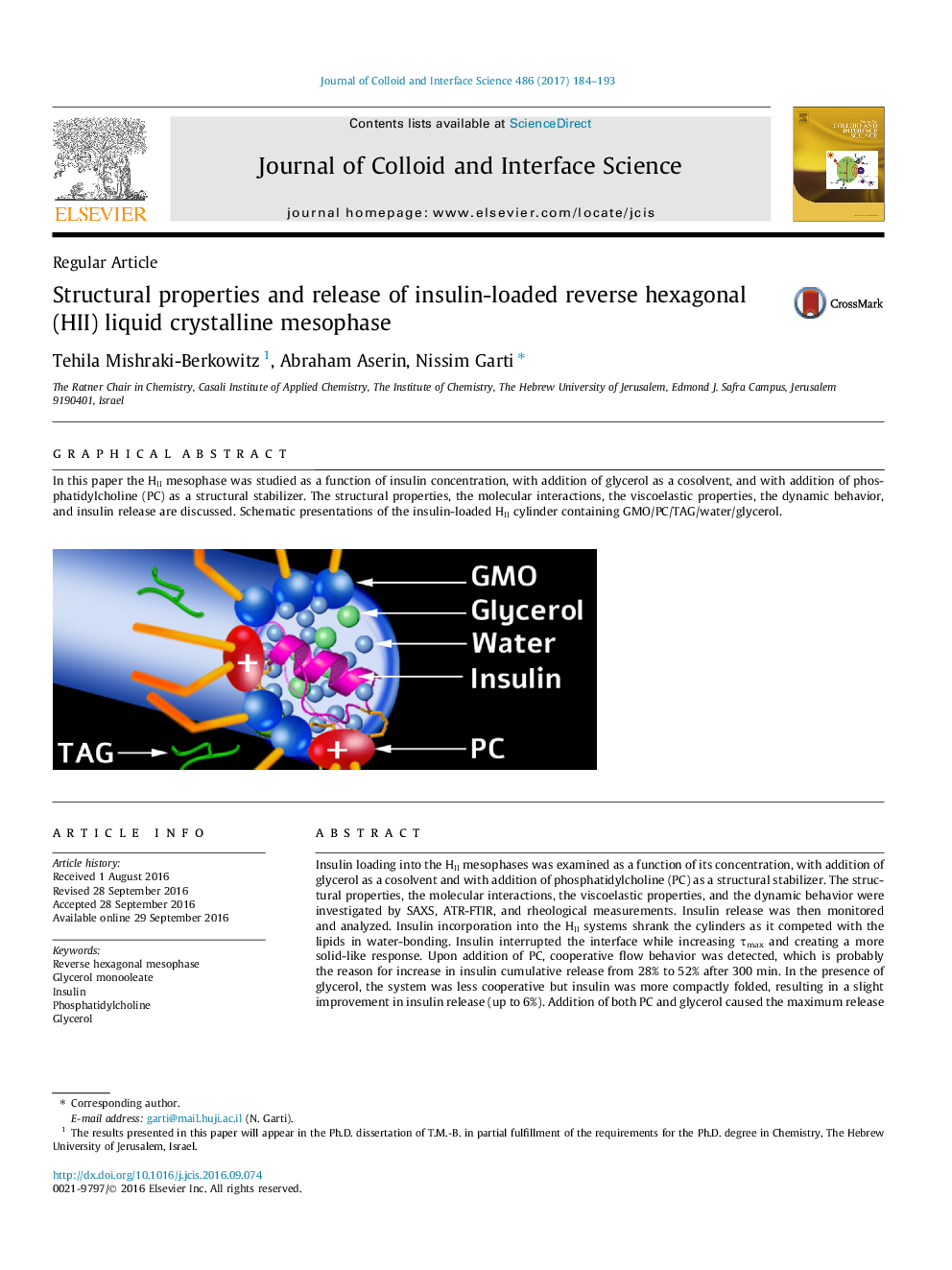| Article ID | Journal | Published Year | Pages | File Type |
|---|---|---|---|---|
| 4985478 | Journal of Colloid and Interface Science | 2017 | 10 Pages |
Insulin loading into the HII mesophases was examined as a function of its concentration, with addition of glycerol as a cosolvent and with addition of phosphatidylcholine (PC) as a structural stabilizer. The structural properties, the molecular interactions, the viscoelastic properties, and the dynamic behavior were investigated by SAXS, ATR-FTIR, and rheological measurements. Insulin release was then monitored and analyzed. Insulin incorporation into the HII systems shrank the cylinders as it competed with the lipids in water-bonding. Insulin interrupted the interface while increasing Ïmax and creating a more solid-like response. Upon addition of PC, cooperative flow behavior was detected, which is probably the reason for increase in insulin cumulative release from 28% to 52% after 300 min. In the presence of glycerol, the system was less cooperative but insulin was more compactly folded, resulting in a slight improvement in insulin release (up to 6%). Addition of both PC and glycerol caused the maximum release (55%). The addition of additives into the HII system demonstrates how structural modifications can improve insulin release, and influence future design of encapsulated drug delivery systems.
Graphical abstractIn this paper the HII mesophase was studied as a function of insulin concentration, with addition of glycerol as a cosolvent, and with addition of phosphatidylcholine (PC) as a structural stabilizer. The structural properties, the molecular interactions, the viscoelastic properties, the dynamic behavior, and insulin release are discussed. Schematic presentations of the insulin-loaded HII cylinder containing GMO/PC/TAG/water/glycerol.Download high-res image (178KB)Download full-size image
